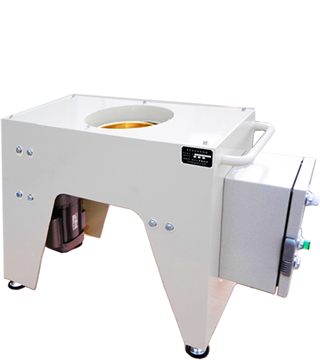Test Method: TJFS-106 Green sand surface stability measurement method
1. Application
This applies to the test method of green sand surface stability.
2. Definition
Surface stability is defined as the figure calculated from the amount of sand grains detached from a standard specimen when the specimen is given vibration on a sieve.
3. Testing apparatus and instrument
3.1 Balance
A balance of sensitivity of 0.1g is used.
3.2 Sieve
A sieve of an inner diameter of 200mm and nominal mesh size of 3360μm is used.
3.3 Vibrator
The vibrator should be capable of giving a sieve, attached in a horizontal position, vibration of 45 to 50mm back and forth movement and 18 to 22mm side way movement simultaneously at a frequency of 290 to 350 times in a minute.
3.4 Examination
The instrument used in the test are checked at an appropriate interval to maintain the necessary precision.
4. Testing procedure
4.1 Specimen preparation
Test specimens are prepared by the method of TJFS-101 (Preparation of standard green sand specimen). The sand forming a specimen should not be reused in another test.
4.2 Operation
Weight of the specimen is first measured. Then it is placed softly on a sieve attached to the vibrator and vibration is given for 60 seconds. Weight of the specimen left on the sieve is measured.
4.3 Calculation of stability
Stability is calculated by the following equation.

where
5. Expression
Surface stability index is expressed in %
6. Record
The result is recorded to the first decimal place. Tests are repeated two times or more from the same batch of sand and average value is calculated from results within ±5% of the standard deviation.

 NS-SSIT1SURFACE STABILITY INDEX TESTER
NS-SSIT1SURFACE STABILITY INDEX TESTER